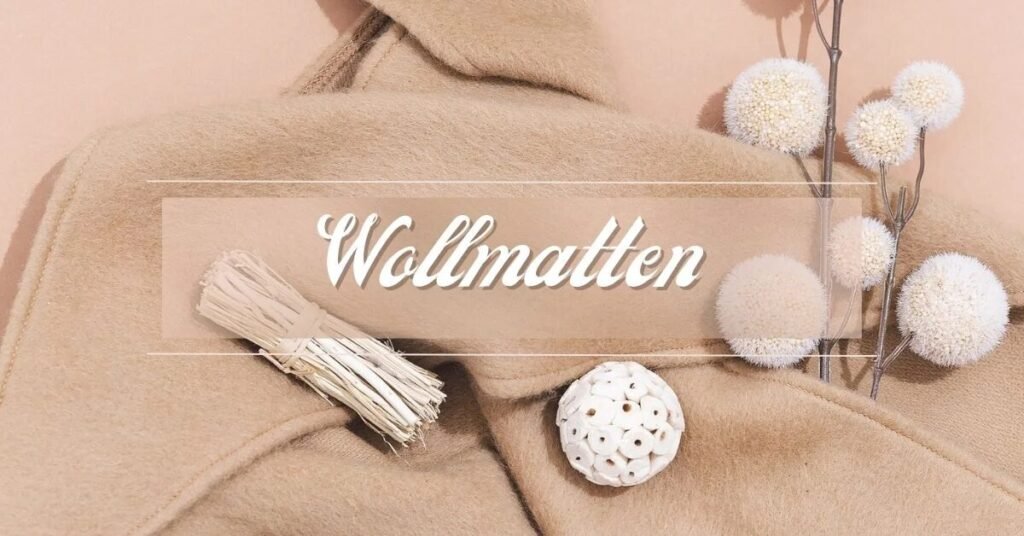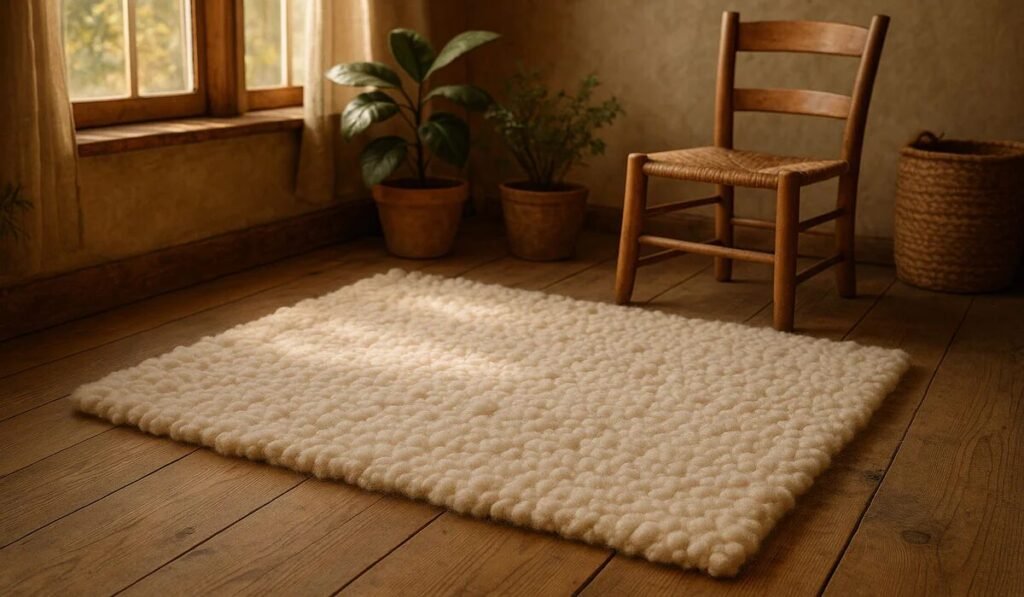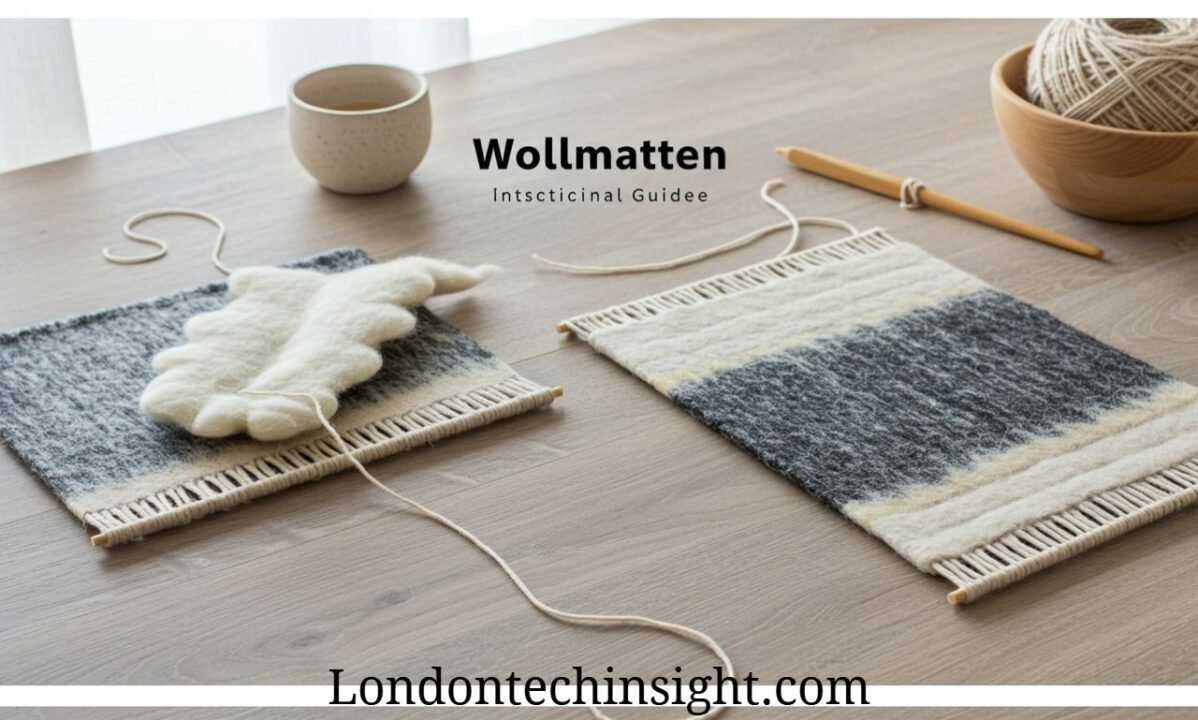Introduction
In today’s sharp-transit world, people are constantly searching for practical, environmentally friendly and durable solutions that simplify everyday life by promoting stability. Such an innovation attracts attention to homes, construction projects and industrial uses, Wollmatten. Originally inherent in traditional textiles and insulation practices, Volmeton has developed in versatility with interior design and applications ranging from floor to soundproofing and thermal insulation. What makes them particularly attractive is their combination of natural fiber, durability and adaptability, from which they are not only functional, but also environmentally aware.
Equally for home owners, designers and businesses, Volmetans serve as an excellent alternative to synthetic products that often damage the environment. By combining modern production methods with natural resources, these mats bring comfort, efficiency and stability together. This article examines history, use, benefits, challenges and future ability to Volmeton, which offers a comprehensive resource for anyone eager to anyone about this innovative product.
Table of Contents
What Are Wollmatten and Why Do They Matter?
Wolmatten, often referred to as wool mats, is the textile products that are mainly made from natural wool fibers. They can also include recycled material based on their intended application. Historically, wool has been used for warmth and protection, but in mats, it uses a completely new spectrum. Unlike synthetic matte made of plastic or foam, Volmeton emphasized breath, natural flexibility and biodegradability.
The relevance of Volmeton lies in their multi-factories. They are suitable not only for home use – such as carpets, carpets, or wall hanging – but also in industries such as construction, sound engineering and environmental protection. For example, their natural insulation properties make them ideal in permanent architecture, while their shock-absorbed ability makes them valuable in sports floors and packaging.
Historical Background of Wollmatten

The origin of Volmeton can be detected in areas where sheep farming was prominent. Wool was first one of the fiber in textiles, and wool mat was a common thing in Europe and Asia for heat or floor coverings. In fact, nomadic tribes often used wool mats inside tents to create insulation against rigid climate.
Over time, industrial weaving and felting techniques revolutionized the production of wool mats. By the 19th and 20th centuries, Europe, especially Germany and Switzerland, became the hub for high -quality Volmeton manufacturing. Today, with the increase in stability and being conscious of the environment, their popularity is being revived globally, with manufacturers with innovative designs for modern use and creating multi -layered mats.
Key Benefits of Wollmatten
Volmetons are gaining momentum not only for their practicality, but also for the diverse benefits they provide. His popularity is closely associated with his environment, health and functional benefits.
Eco-friendly production: Wool is an renewable resource, which makes Volmetane more durable than mats made from petroleum-based materials.
purability and Longevity: High-quality Volmeton is finalized for decades.
Natural Insulation: They provide excellent thermal and acoustic insulation.
Relaxation and style: Soft textures and elegant design make them attractive to internal places.
Biodegradeability: Unlike plastic, leaving the Volmeton, naturally disintegrates without polluting the ecosystem.
These advantages align with global movements towards Green Living and Healthar Lifestyle.
Applications of Wollmatten in Modern Life
Volmeton in homes
In residential locations, Volmetons are widely used as floor coverings, wall panels and even roof decorations. They create a warm, comfortable atmosphere by regulating humidity and temperature indoors.
Volmeton in architecture
In the construction industry, Volmetons serve as a natural insulator for walls, floors and roofs. They reduce dependence on synthetic insulation material and cut energy cost significantly.
Volmeton in soundproofing
Recording studios, cinemas and offices often rely on Volmetane for their excellent acoustic absorption. By reducing sound reflections, they create a balanced hearing environment.
Volmeton in environmental protection
Volmeton is also deployed in erosion control projects, especially in riverbank and landscape. Their fibrous structure stabilizes the soil and supports vegetation growth.
Comparative Table: Wollmatten vs Synthetic Mats
| Feature | Wollmatten (Wool Mats) | Synthetic Mats |
| Material Source | Natural wool, renewable | Petroleum-based, nonrenewable |
| Durability | High (with proper care) | Medium to high |
| Environmental Impact | Biodegradable, eco-friendly | Non-biodegradable, polluting |
| Thermal Insulation | Excellent | Limited |
| Cost | Moderate to high | Low to moderate |
This comparison demonstrates why consumers are increasingly shifting toward wollmatten despite their slightly higher cost—they are better for health, comfort, and the environment.
Manufacturing Process of Wollmatten

The construction of Volmetane is both traditional and innovative based on the type. The process includes several major stages:
Shrinking and cleaning: Wool is cut with sheep and cleaned to remove impurities.
Carding: Fiber is aligned in sheets.
Felting or weaving: Depending on the desired mat type, the wool is either felt (compressed with moisture and heat) or woven.
Finishing: Matt is treated for durability, painted for color, and sometimes reinforced with natural or synthetic backing.
The final product reflects both craftsmanship and technology, making a bridge between the Volmetane tradition and modern demands.
Challenges and Limitations of Wollmatten
Although highly beneficial, Volmetons also come with challenges.
Cost factor: They are usually more expensive than synthetic options.
Maintenance: Wolmatten requires regular cleaning to avoid dust and moth infections.
Availability: There is no access to high quality Volmetons in all areas.
Moisture sensitivity: Excessive risk to moisture can harm them when untreated.
Despite these shortcomings, advantages often surpass boundaries for people seeking durability and stability.
Wollmatten in Sustainable Design and Lifestyle
The current change towards Sustainable Living has made Volmeton central in environmentally friendly design projects. Architects and interior designers like them for their ability to reduce rapid carbon footprints. Additionally, environmental conscious homes choose to opt for volmaton as they align with green living principles.
Interestingly, Volmeton is also part of the “slow living” movement, where consumers produce massively, give importance to products with longevity and natural origin on disposable items. It only places them as more than mats – they symbolize the choice of a lifestyle.
Future of Wollmatten

The future of Volmeton looks promising, especially more industry moves towards stability. Innovations include:
Hybrid content: combination of wool with recycled fibers for additional durability.
Smart Volmeton: Integration of sensors for temperature regulation in modern homes.
Global expansion: increasing demand in Asia and North America.
Eatter and agriculture: more widespread use in protecting soil and crops.
The increasing demand reflects not only functionality but also cultural and environmental changes.
Emerging Wollmatten Innovations
| Innovation | Description | Potential Use Cases |
| Hybrid Wollmatten | Blend of wool and recycled fibers | Flooring, industrial mats |
| Smart Wollmatten | Embedded sensors for climate control | Modern housing, offices |
| Eco-erosion Wollmatten | Soil-stabilizing mats | Agriculture, landscaping |
This shows how the versatility of wollmatten continues to expand into high-tech and ecological fields.
Applications in Everyday Life
Volmetons are not limited to an environment – they thrive in many contexts. In homes, they are often used as floor coverings, wall decorations, or underlazes for rugs. Family prefers them for warmth that they provide during winter, while still allowing breathing in the warm months.
In construction, they serve as a natural insulation for walls and ceilings, which reduces the requirement of artificial heating and cooling systems. Their acoustic benefits also make them valuable in studios, offices and schools where sound management is important. Additionally, environmental projects such as riverbank stabilization and erosion control employ Volmeton as they support soil health and vegetation growth.
Comparing Wollmatten and Synthetic Alternatives
| Feature | Wollmatten (Wool Mats) | Synthetic Mats |
| Source Material | Natural wool, renewable | Petroleum-based |
| Lifespan | 15–25 years | 5–10 years |
| Environmental Impact | Biodegradable | Non-biodegradable |
| Comfort | Warm and breathable | Less breathable |
This comparison shows how wollmatten outperform synthetic mats in sustainability and longevity, even if their initial cost is slightly higher.
The Future of Wollmatten
With global change towards environmentally friendly lifestyle, the demand for Volmeton is expected to increase. Manufacturers are already experimenting with hybrid designs, combining wool with recycled materials to make them even stronger. Some companies are also searching for “smart” Volmetans that integrate the sensor for climate control in modern homes. These innovations show that Volmetons are not only part of the past, but also an essential part of the future.

Conclusion
Wolmatten represents much more than a simple mat – they symbolize a balance between tradition, innovation and stability. From their historical origins to modern applications in homes, architecture and environmental projects, they demonstrate the permanent value of natural materials in the era of synthetics. Although they require investment and care, benefits in terms of durability, comfort and environmentalism make them worth considering for modern life. As the society leads to greenery and more conscious lifestyle, Volmeton is likely to become a head in both homes and industries.
FAQs
1. Are Volmetons suitable for people with allergies?
Yes, high-quality Volmetanes are hypoallergenic when treated properly, although individuals with wool sensitivity should confirm the product details before purchasing.
2. How long does Volmeton usually last?
With regular maintenance, the Volmetane can live between 15–25 years, which exceeds many synthetic mats.
3. Can Volmeton be used out?
Yes, some types are designed for external use, especially in landscaping and erosion control, but they should be treated properly for weather resistance.
4. Does Volmeton require special cleaning?
Yes, regular vacuuming and topical professional cleanliness is recommended to maintain their quality and prevent pests.
5. Why are Volmetons more expensive than synthetic mats?
Their cost reflects natural raw materials, craftsmanship and durability, offering long -term values compared to cheap synthetic options.
Also Read This: FSI Blogs US
